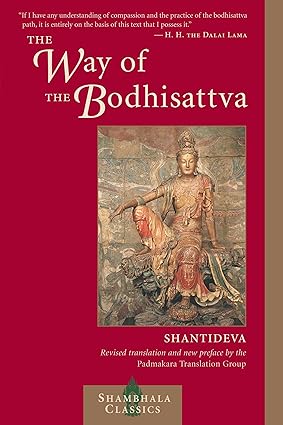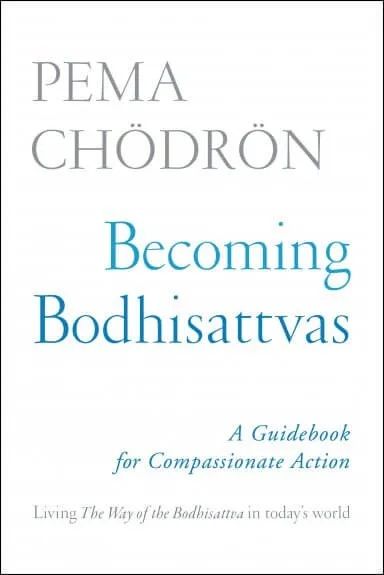Teaching for the modern world
Humanity is currently facing some of the greatest challenges in history, including climate change and a global pandemic. At the heart of Shantideva’s The Way of the Bodhisattva are tools and practices that help us to grow in the midst of these demanding times, by opening our hearts and suffusing our very beings with care, compassion, and a strong sense of connection with others.
About Transmission
Transmission holds a profound place in the Tibetan Buddhist tradition. Passed down in an unbroken lineage from teacher to student since the time of the Buddha, these transmissions represent living expressions of the deepest truths that we gain through meditation. Widely understood to bring the essential points of the entire Buddhist path to life, Shantideva’s The Way of the Bodhisattva is a text that Mingyur Rinpoche sees as profoundly relevant to our time. Over the course of a year, through a series of live retreats and online courses, Rinpoche will pass on this transmission, which he received from his own teachers. A guided, step-by-step exploration of The Way of the Bodhisattva will be supported by Mingyur Rinpoche himself, Tergar guides, and a variety of other lineage teachers. In receiving these teachings, you will deepen your practice and imbue your life with increased purpose and well-being.
Why I should attend?
During this transmission, Mingyur Rinpoche will unlock the transformative potential of The Way of the Bodhisattva with step-by-step instructions for modern people. Participants will learn techniques to raise bodhichitta, cultivate mindfulness and introspection, develop the qualities of patience, joyful effort, and meditative concentration, and see things as they truly are. No matter what stage of the path you are on, this transmission will bring deep wisdom and purpose to your experience of daily life. It’s also a great opportunity to receive this teaching from an unbroken lineage of master practitioners who, throughout generations, integrated them fully into their practices and everyday lives.
Try Practice
While the pandemic has presented us with tremendous challenges, it has also called forth deep, collective compassion. Take a moment to bring to mind an instance, perhaps from early on in the pandemic, when you felt compassion and solidarity with someone with whom you never would have before. What effect did this sense of compassion and connection have on your own experience of the pandemic at the time? Can you recall any other moment when a shared experience gave you a stronger sense of sameness with a stranger or broke down walls between you and others?
Vajrayana Online Courses
Write your awesome label here.
Essence of The Way of the Bodhisattva
Write your awesome label here.
The Way of the Bodhisattva Immersion
Resources

The Way of the Bodhisattva
by Shantideva
Join Vajrayana Online
Write your awesome label here.
About Shantideva
Shantideva is thought to have been born to a royal family in modern-day
West Bengal in northern India. On the eve of Shantideva’s enthronement,
Manjushri—the bodhisattva of wisdom—is said to have visited him in a
vision in which he instructed Shantideva to renounce the life of a
householder and go forth into the homeless life. Shantideva left
immediately upon receiving this vision, wandering through the jungles of
northern India in search of truth. After some years of practice, he
traveled to the ancient Indian monastic university of Nalanda, where he
studied the sutras and tantras. While ridiculed by his fellow monks for
his outwardly lazy behavior, he practiced in secret, actualizing the
texts and practices he was studying. The monks, in their contempt,
pressured him to teach, thinking that he would fail miserably and be
ultimately shamed into leaving the monastery. To mock him, they set out a
throne for him worthy of the greatest masters of his time. However,
much to their surprise, he delivered without any hesitation what we now
know as The Way of the Bodhisattva. Since that day, Shantideva has been revered as one of the greatest Buddhist masters in history.
Frequently Asked Questions
What is a bodhisattva?
A bodhisattva is someone who is committed to reaching buddhahood in order to benefit all beings, and ultimately bring them to the same state. Bodhisattvas are often considered enlightened teachers, but could also be everyday people, just like us, who have the motivation of bodhichitta (see below).
What is Bodhichitta?
“Song of realization” is a translation of the Sanskrit word doha. In contrast to other texts, these songs were spontaneously sung by yogis and yoginis, known as siddhas, to share their spiritual realization for the benefit of the listener. These songs were written down afterward in an unedited fashion.
What if I miss part of the year-long transmission? Can I still participate?
Absolutely! The elements of the transmission function together as a cohesive whole, but each one also stands alone. Join in whatever elements work for you!
What does it mean to receive a transmission?
“Transmission” is a traditional term that refers to a set of meditation teachings that is passed down from a teacher to a student or group of students. In the Tergar context, “transmission” means that Mingyur Rinpoche passes on important lineage teachings to students so that we can recognize the buddha within and stabilize this recognition. In addition to teachings and meditation instructions, a transmission may include other elements that can help make the teachings more experiential for us such as reading transmissions (lung) for important texts, empowerments (wang), and opportunities to receive vows.
Do I have to be a Buddhist to join the transmission?
This transmission includes courses and events open to all who wish to better understand the Buddhist tradition, its practices, and the workings of the mind.
Do I have to have prior experience in meditation?
Prior experience in meditation is suggested but not required for these open events and courses. Mingyur Rinpoche teaches in a highly relatable way, so much of this transmission is based on exploring our lived experience. If you wish to acquire a foundation for these practices, attending a Joy of Living program online is a good option.
What do I do if I don’t meet the requirements for the restricted Immersion course?
Vajrayana Online will run the Nectar of the Path and Retreat courses with full support of Tergar guides. The Tergar guides will conduct weekly practice and discussion sessions. These live sessions are available as part of your Vajrayana Online subscription.
Alternatively, you might want to consider engaging in any of the other on-demand courses in Vajrayana Online or explore the Joy of Living program. Completing the full Joy of Living program and corresponding homework will qualify you to attend a Path of Liberation Levels 1 & 2 retreat in the future, where you can receive the pointing out instruction and transmissions required to join restricted Vajrayana Online courses.
Alternatively, you might want to consider engaging in any of the other on-demand courses in Vajrayana Online or explore the Joy of Living program. Completing the full Joy of Living program and corresponding homework will qualify you to attend a Path of Liberation Levels 1 & 2 retreat in the future, where you can receive the pointing out instruction and transmissions required to join restricted Vajrayana Online courses.
Can I join at any time?
You can join Vajrayana Online at any time. New material will be released monthly, and you can engage in it at your own pace. In the case of the online retreats with Mingyur Rinpoche, however, it is highly recommended that you attend the live events at events.tergar.org rather than watch the recordings. Recordings will be made available, but only for a limited time.


